Features of I-beams 25B1

I-beam 25B1 - ferrous metal products made of low-carbon and medium-alloyed alloys. As a rule, one of the alloys is used that meets the characteristics of the minimum required values inherent in it.
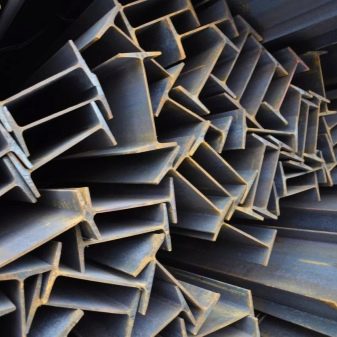
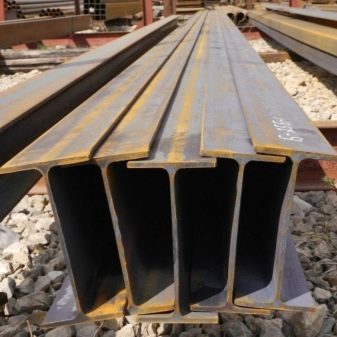
Description
I-beam 25B1, suitable as beams for reinforcing structures, has the following advantages.
Easy delivery. Despite the undershelf gaps (the H-shaped profile does not allow close stacking of I-beams), the transportation of a metal profile of this class will not cause any particular difficulties. It is only important to load it along the length of the body or the delivery truck: for example, a 12-meter element will not fit into a conventional dump truck, while 2-, 3-, 4-meter sections will easily enter a KamAZ truck with two or three separate stacks.
The I-beam component is used as a supporting base. The 25th denomination means 25 cm across the width of the main wall. This means that both the thickness of the shelves and the main partition have been structurally recalculated by the engineers.
Consequently, its capabilities, scope are not as limited as it seems at first.

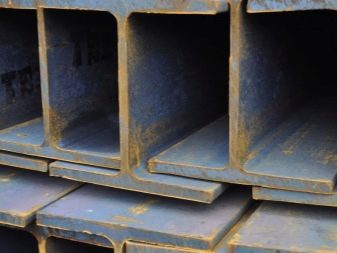
High-speed assembly, fast assembly of frames. The steel from which the I-beam 25B1 is made is easily welded, drilled out, sharpened and sawn. This is important given a very limited time for commissioning a particular property. 25B1 allows you to organize all kinds of nodes - rigid, hinged, semi-rigid.
Element 25B1 has significant tolerance to any type of permissible load. It is used as frame components for fixed and movable (non) load-bearing structures for a wide range of purposes. 25B1, in comparison with a similar channel, slightly exceeds its weight. In general, the mass of products of this class is not so high - with an equivalent strength.
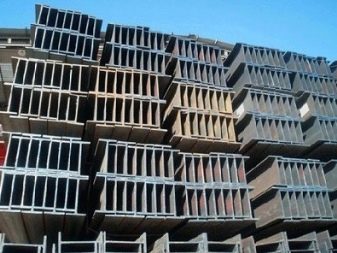
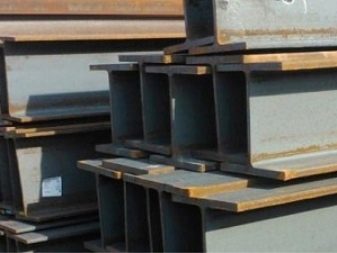
Specifications
Despite the fact that this assortment is represented by almost the only type of I-beam - 25B1, there is the Russian GOST 57837-2017, which replaced the standards of STO AChSM 20-1993. According to the first, the characteristics of the I-beam 25B1 correspond to the following values.
- Cross-sectional area (square of the cut) - 32.68 cm2.
- The radius of gyration is 104.04 cm.
- Weight 1 m 25B1 - 25.7 kg. In 1 t there is approximately 36.6 m of the I-beam 25B1.
- The curvature parameter, according to TU / GOST, is no more than 2 ppm.
- The radius of the transition of the main partition to the sidewalls is 12 mm.
- The thickness of the main partition is 5.5 mm.
- The length of the sidewall excluding the main partition is 59.5 mm.
- The width of the main partition is 23.2 cm.
- The width of the entire I-beam (side walls and wall thickness) is 124 mm.
- The length of the segment is 2, 3, 4, 6 and 12 m. The long-fold length, not indicated here, is formed only due to the arbitrary division of the 12-meter beam at the request of the customer: for example, 9 and 3 (total 12) meters.
- The total height of the I-beam (with shelves, according to their level / thickness) is 248 mm.
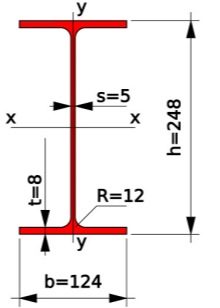
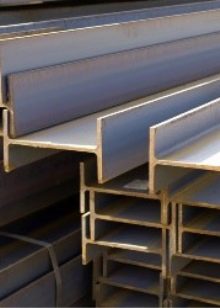
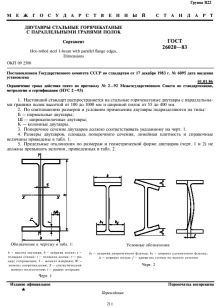
According to TU, the length of a 12-meter segment may be more (but not less) by a maximum of 6 cm. The width / height of the walls differs upwards by a maximum of 3 mm. The density of the steel from which the 25B1 beam is made is approximately 7.85 t / m3. The weight of 1 running meter is equal to the product of the cross-sectional area (in terms of square meters, 1 m2 = 10,000 cm2) by this very meter. Alloying additives of different grades of steel slightly change the density of the real alloy, however, a truck with a noticeably large load capacity is taken to deliver the batch, so this error does not really matter.
The mass of 1 km of timber is 25.7 tons (the largest truck will be required, possibly with an additional trailer), and 5 km of the same product (for example, for the construction of an industrial building or a shopping center) already weighs 128.5 tons (several trucks will be needed, a road train or delivery by freight train). 25B1 is not galvanized by default. Paint the structure after assembly using primer and enamel.
Painting the surfaces of the assembled elements will significantly extend the service life of the resulting assembly, protecting it from the effects of atmospheric precipitation.
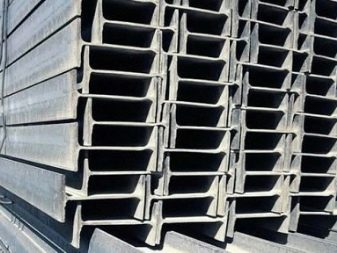
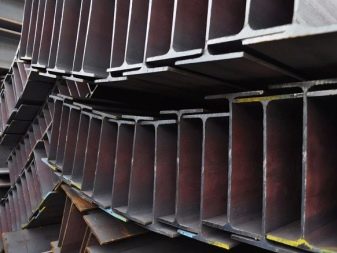
Views
Rolled products 25B1 are manufactured with parallel flange edges. The designation "B" is an ordinary I-beam. He does not have a wide-shelf or columnar design, as is reflected in his fellows - 25SH1 and 25K1. It was said above that practically one type of this I-beam is produced. However, the assortment assumes the presence of a variety of elements 25B1 with inclined shelves.
Here we mean that not so much the shelves themselves are tilted, but their inner sides are, as it were, tilted outward. This means that the outer sides are still perpendicular. The deviation occurs due to the variable value of the thickness of the shelves: along the entire length of the I-beam, they remain thicker at the base (where they converge with the main lintel, and there is a rounding along the radius specified in the standard values) - and become thinner closer to their longitudinal edges.
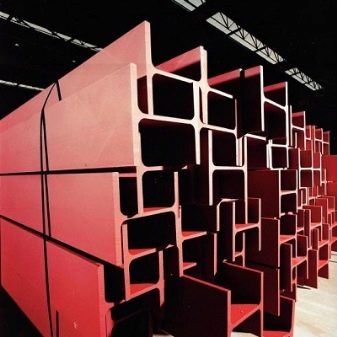
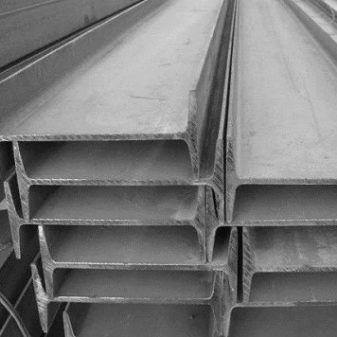
Popular manufacturers
Russia is the first in the world in ferrous metal. Its production volumes are such that they can easily overtake the United States and all of Western Europe. The leading enterprises are ChMK OJSC, NTMK OJSC and Severstal. Production and transportation of products is carried out in accordance with the standards of GOST-7566. All manufacturers adhere to sizes 25B1 in accordance with GOST.
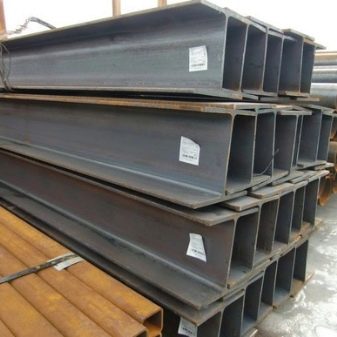
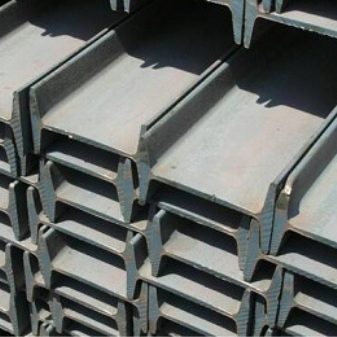
Application
Profile 25B1 became widespread when laying engineering communications, strengthening existing mines, building hangars for aircraft. It is used in the laying of oil and gas pipelines, the construction of lifting (auto) cranes, bridges and overpass areas. The construction of the I-beam 25B1 makes it possible to redistribute the load force to the interfloor floors and supporting structures: for example, the builders have the opportunity to erect quickly and efficiently, within a limited time frame, building frames with very long spans. I-beam 25B1 is used for the construction of heavy special equipment. In construction, a high load on the 25B1 beam has a high demand: I-beams, laid according to the calculation of a certain project, allow you to fill in interfloor slabs, lay components and components of the finished floor and lay a counter-lattice with roofing sheeting.
The second area of application of the I-beam 25B1 is mechanical engineering. It provides for the presence of this element as a component of the frame structures of trucks, wagons and special equipment - from bulldozers to excavators. The more impressive the denomination of the I-beam, the more opportunities to use it as a consumable and for military equipment.
Varieties of 25B1, however, are deprived of such a prospect: the beam, for example, if it resisted the explosion of a grenade thrown under the tank, then an armor-piercing projectile would significantly damage it. 25B1 is an element for civilian production, not military one.
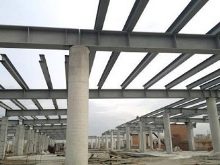















The comment was sent successfully.